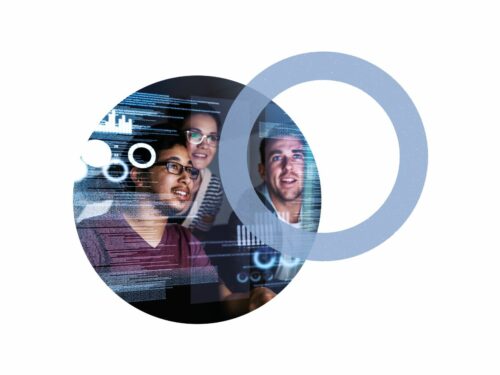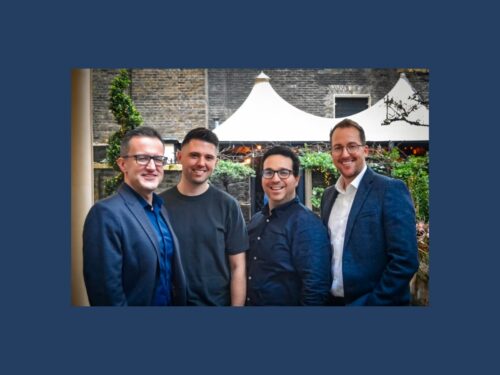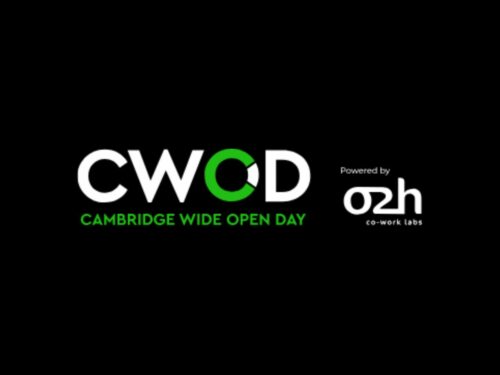If you are struggling to train and retain your technicians, then you might need Netmatters’ Skills Bootcamp. Our...
Member Spotlight – Spark EV Technology
What is the future for electric vehicles and what needs to be done to speed up their adoption? We spoke to Justin Ott, CEO at Spark EV Technology, about how their software is building driver trust in EVs.
Hi Justin. Can you tell us about how the technology behind Spark EV was first created and developed?
The idea for Spark first started about 7 years ago. I’ve been driving electric vehicles since about 2011. When I bought an EV and was testing them, I would look at the onboard range, undertake a journey and then see how erratic it was. You’d start a journey with maybe 85 miles, the range displayed as an estimate of how far you can go before you run out of battery, and I would do a couple of junctions on the A11 or the A14. I would then transition between urban and motorways and would see a huge difference. There were such obvious errors.
I thought ‘well this is really bad’, but when I questioned the salespeople that were trying to sell the vehicle, or the engineering team when discussing this very early doors over at Cranfield, they would say it was due to the previous journey characteristics. I realised that if electric vehicles were ever going to replace petrol and diesel engines, there would need to be something better.
And so, I began plugging aftermarket tools into the vehicles when I bought them. This meant I could reverse engineer the error codes and understand a lot of the data points that are used to make up this range estimation. I then worked with Marks and Clerk LLP in Cambridge to write the first patent around personalised journey prediction, using the various data points from the vehicle, the driver, the weather and the route, and then using machine learning algorithms to refine that prediction.
I wrote that first patent back in 2015. Then I was selected onto the Accelerate Cambridge programme at the Judge Business School at Cambridge and they said you have a great piece of technology here. You need to form a new company and put the patent IP into that, grow the team and get on with it. That’s where Spark started.

So, what’s your background personally?
I did a degree in computer science and then worked in software for Sungard, building and selling software into banking and wealth management firms around the world. I then worked for Redgate Software in database software, again, mainly in commercial roles because I’ve always enjoyed commercialising IP and working with customers. Spark, was started off the back of trial and error with these range tools.
You have patented the technology in the US and Europe. Are you able to tell us more about the process you went through?
I think the way to start the patent process is to write down everything you have, and think you have, that is unique in terms of your approach to the system. Software cannot be patented, it’s very hard to do, so you have to look beyond the software and the actual system. I began by writing down everything that I thought was patentable in terms of the system and the data points we collect and the methods we use.
Once I had that, I worked with the guys over in Cambridge, at the Marks and Clarke patent office. Most patent lawyers will sit down with you for half an hour and look at what’s unique. I then suggest you pay a small fee into the internet property office, so they can carry out a search for you. You can then see what’s unique and what’s not, and what’s out there. That’s also a really good way of looking at your competitors. Then, it’s a case of drafting. I can write down and draw diagrams but ensuring it meets legal requirements is where its useful to get a patent lawyer, which we did.
That was started in the UK and then two years after that my colleague, Greg, took over the patent side. I work with him and other patent lawyers and we’ve now expanded that patent into Europe and the US for the current product.
Who is the target audience? Are you planning to partner with the manufacturers of the vehicles, or is this going to become primarily a consumer product?
It’s primarily sold directly to car companies, so OEMs (Original Equipment Manufacturers). We sell directly into those teams; we do projects with the engineering teams and then we deal with the commercial and procurement sides. We’re embedding this directly into cars as part of a satnav.
So, for example, driver Tim tries an EV with our technology. He gets in the vehicle and it pairs with his phone. The car will immediately know it’s him and differentiate between Tim and different people in his family that use the vehicle. Tim puts in his destination and we are operating in the background learning all about Tim and how he uses his vehicle – it’s a little bit like big brother but not as scary.
It is about intelligence rather than surveillance?
Exactly that.
Can you tell us more about your partners? How were the partnerships established and how important have they been to your growth?
Hugely. So firstly, there is the Connected Places Catapult. Those guys and Wayra are part of Telephonica, who introduced us to one of our first customers, Hyundai. We’ve also done other accelerators around the world, including in Canada for their Creative Destruction Lab, which is a very, very good accelerator and very demanding. Every 8 weeks in Toronto you’re grilled about your product and making key milestones. On those programmes, we’ve met car companies and been introduced to senior people, which has helped us develop a route to market a lot quicker.
Most start-up companies selling into this industry usually die out and run out of cash, because they can’t get hold of the right people. So, having these partnerships is crucial. RocketSpace is a good example. We were given a big project with BP off the back of that and we were introduced to Nissan and Renault through them too.
These programmes are absolutely key and anyone starting out should go on the accelerators relevant to your vertical. There’s no point in us going on a fashion or a legal tech accelerator, we had to pick automotive accelerators that had the partners on there.
You obviously have a big connection to Cambridge, both in terms of your education at the University and work with the Catapults and partners based there. What was the reason for setting up in Newmarket, rather than staying closer to the Cambridge tech scene?
Cambridge is really good for the ‘water cooler moment’. You get that through the Judge and we’ve had lots of mentors who have become friends and who advise, signpost and, if I’ve got a problem around IP branding, pitching, anything, I’ve got a really good contact base off the back of that Judge accelerator programme. The same goes for all the other accelerator programmes and you build really good networks and really good contacts very, very quickly, so I think they’ve been really important.
But the success of Cambridge has also been its biggest challenge. We’ve got 6-8 staff now and we wanted to move. We needed more dedicated office space, where it wouldn’t take 6-9 months to put charge points in for staff that come in with their own electric vehicles. We needed space, parking, access to trains and we needed flexibility. Suffolk and Newmarket in particular are really good for those connections and what we’re hoping for, and what we’re finding, is you get a better quality of life. Instead of sitting in traffic, getting in and out of Cambridge and losing 4 hours a week, our staff arrive happier at work – I hope – and have a better quality of life.
In terms of recruiting people, you tend to see younger engineers live and remain in Cambridge. But when they get older, they move out. A lot of our staff are living outside of Cambridge, so we’re trying to target engineers and commercial staff that may have been in Cambridge but have moved out for the quality of life.
The other draw is the council. The council have actually been really supportive, and we’ve been invested in by New Anglia Capital and by the Low Carb Innovation Fund out of the UEA, so we felt it was important to move closer to that along that A11/A14 corridor.
How about London? Have you considered moving closer to the city for investment, or do you have a good enough support network in Suffolk?
We actually have a member of staff who’s from North London and either commutes by train or by electric vehicle here, so it isn’t an issue. We’ve had investors from London, we’ve had investors from Cambridge, the Channel Islands and abroad, so geographically it hasn’t made a big impact on getting any investment in.
You obviously have strong connections with Universities in the region, including the University of East Anglia and the University of Essex. How are these institutions supporting you?
The partnership with the University of Essex started a few years back, well actually it started at the beginning of the business when we secured an Innovation Voucher for the first patent. That helped with a £5000 voucher towards the patent and it also supported us with initial tests around the way we construct our data models, the right approach, and the right machine learning methods. We worked with Dr Michael Fairbank and Dr Daniel Karapetyan. They have continued that relationship with us, helping and advising the company, and have worked with us for our successful KTP application, for which we are hiring a software engineer.
Do you anticipate that as EV manufacturers develop their journey prediction systems over the coming years, they will start to develop their solutions in-house?
I think that is a really good question and we would be arrogant and naïve not to think there are people trying to do what we do out there, and that includes the in-house teams within the OEMs. But our feeling is that we’ve got a march on them. We offer them a product that makes it easier to work with us than to build their own. It gives them speed to market and it’s a lower cost than trying to do this from scratch, so we hope in a few years’ time we will actually be the standard across the industry.
We’ve outperformed every OEM in testing, so in a few years’ we hope to be an integral part of the EV supply chain. We supply the software, not just for journey prediction but for other EV tools we have on our product roadmap, so that we’re a trusted partner to them. We’re not going to sign up every OEM, but we hope to be working with the core ones over the next few years. We hope to be a partner and integrated deeply with each of these OEMs. We’re spending a lot of the investment we get on getting those licences set up.
What is the plan for Spark EV over the next 5 years?
Over the next 5 years, we’ll be looking to have a presence in Asia and in the US, both from the engineering and business development sides. We’re just back from China, where we were invited by the Shanghai Municipality Government to present at the World AI Conference. I’ve met two car companies out there interested in working with us – to work in China you have to have a presence over there and a separate entity, so we’ll be looking to add locations into Asia and support local customers there, and in the US in Detroit. It will mean partnering with many different vehicle manufacturers, both premium brand and mass production that you and I would probably know of. We’ll be delivering technology to them, not just journey prediction but any other products that we have on our product road map
Is Brexit going to have an impact on this expansion?
So, the problem with Brexit is the ‘just-in-time’ production issue and getting car parts when you’re building different parts around the world. The benefit to us, I believe, is the 0% on WTO rules. There are no tariffs, no tax issues for software and delivering software. We are not delivering brake pads or hardware, so we don’t have manufacturing constraints. We don’t have transport constraints or parts, so in that way Brexit doesn’t affect us and our relationship to manufacturers.
How well do you feel connected to the tech community in the region? You have obviously had a lot of support. Is that part of what keeps you here?
Absolutely. Tech East have helped us in terms of introductions to different companies in the region. We’d like to do more, and I’m also connected with the Cambridge Norwich Tech Corridor. I think tech in the region is still emerging and there are different hubs with different strengths. It’s quite disparate at the moment – but I would like to do more with them. I’m trying to be more involved with Tech East and get along to as many events as possible. We’re looking at different Universities as well, because we’re hoping to find talent. I also want to use other member organisations more, to help in terms of connecting businesses and academia and customers. We have had a huge amount of support already, which is why we stay!
Do Your Team Need Coding & Web Development Training?
Amazon Agency Optimizon Continues Expansion with Strategic Acquisition of Marketplace Power
LONDON – Optimizon, a leading Amazon and e-commerce agency in the UK, is thrilled to announce the successful...
Cambridge Wide Open Day returns with ‘Be Curious’ Sci-Tech City-wide event
LEADING science companies and innovation parks will once again open their doors to showcase their contribution to...




